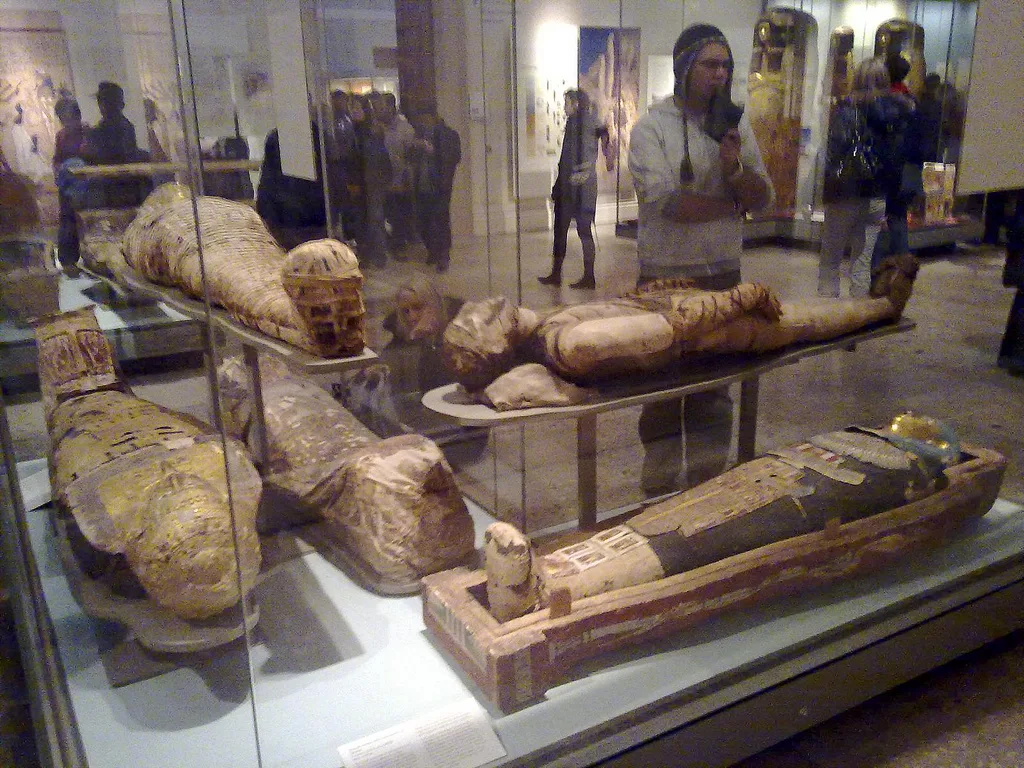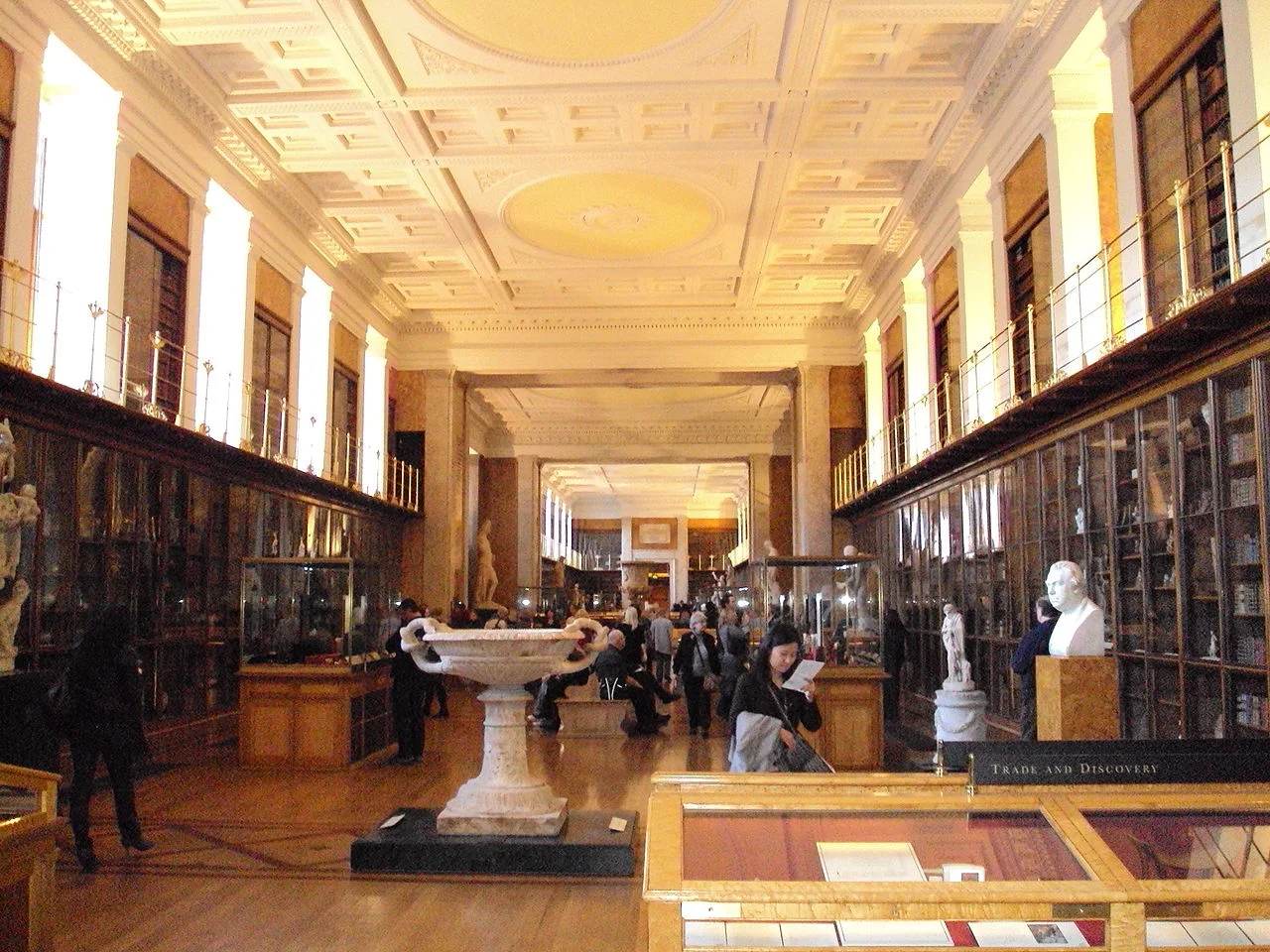British Museum in London (London, Great Britain) - expositions, opening hours, address, phone numbers, map and photos, official website.
The British Museum is the central historical and archaeological museum of Great Britain and one of the largest museums in the world. It was founded in 1753 with the permission of the British Parliament. Its exposition occupies 94 galleries, the total length of which is 4 km. The collection is based on the collections of three famous people - Earl Robert Harley, physician Hans Sloan and antiquarian Robert Cotton. From the latter, the museum received a huge collection of books, which marked the beginning of the creation of the British Library.
 |
| British Museum London |
The British Museum is the colonial history of the British Empire. On an excursion, for example, in the Cairo Museum, you will certainly be told what relics they lack, because they are exhibited in London. What can we say about the Greeks, who are still nurturing projects to restore the former greatness of the Athenian Acropolis.
At first, the museum was located in the aristocratic Montague House in the Bloomsberry area of London. In 1759 it was opened to visitors, the collection was gradually replenished with new exhibits. The antique vases of William Hamilton, the Greville mineral collection, the Townley marbles, as well as priceless masterpieces from the Athenian Parthenon purchased from Lord Elgin were acquired. But not all of the exhibits got to the museum in this way - some got to the country "from the back door." For example, Egypt and Greece are still demanding the return of some of the illegally exported ancient monuments.
A particularly turbulent period in the development of the British Museum fell on the 19th century, during this period it became necessary to divide the collection into departments. In the period from 1823 to 1847, Montague House was demolished, and in its place was erected a modern museum building, designed by Robert Smirk in the style of classicism. On the ground floor, right in the center, there is a once open courtyard, which in our century has received a lattice glass dome. Now the museum is recognized precisely by this "roof": there are many massive buildings with columns in the world, and the light dome over the powerful stone walls has turned into another hallmark of London. Construction work was completed in 2000 by British architect Sir Norman Foster.
 |
| British Museum London |
At the beginning of the 20th century, the museum increased the number of works of art from the Middle East thanks to the results of archaeological excavations in Mesopotamia.
Six cats are officially registered as rat catchers on the staff of the British Museum.
Features of the
The British Museum regularly hosts themed tours, starting at the Paul Hemlin Library. Every Sunday there is a meeting of the Young Friends of the British Museum Kids Club, whose members have free access to additional exhibits and places rarely visited by tourists. Recently, “Nights at the Museum” has become very popular: 4 times a year, children spend the whole night in the museum, listening to interesting stories and playing games. Each night has a specific theme dedicated to a particular world culture, for example, "Japanese Night" or "Egyptian Night". By the way, the Egyptian collection occupies the largest gallery 92 meters long and several other small rooms.
Since 1926, the British Museum Quarterly has been published every quarter, reflecting the events taking place in the museum.
 |
| British Museum London |
Since the museum opened in 1759, several key departments have spun off from it. Thus, mineralogical, zoological, botanical and geological in the middle of the 19th century laid the foundation for another museum - the Museum of Natural History, one of the most visited in modern London. And the invaluable library of the British Museum (ancient manuscripts and the first printed books) was combined with several other collections. So in 1973 the British Library was born, the funds of which are divided into several buildings at different addresses.
British Museum Expositions
Although the ancient Egyptian and Greco-Roman parts of the exhibition are the most popular, the museum presents a unique cross-section of culture from different parts of the Earth: India and China, Africa, Oceania, South America. This is the history of Britain itself - from the Roman period to the Middle Ages and beyond. No less interesting is the numismatic collection (coins) from all over the world, there is a separate collection of watches. Painting is exhibited, maybe not so widely, but impressive: these are engravings of the Renaissance (Michelangelo, Raphael, da Vinci, Durer), works by Rembrandt and English artists. Let's go over the most important collections in more detail.
 |
| British Museum London |
The British Museum's collection of Egyptian artifacts is considered one of the largest in the world. The period from the 3rd millennium BC is especially widely represented. e. 7th century AD e. Among the exhibits are a sculpture of Pharaoh Ramses II, a granite head of Thutmes III, statues of gods and stone sarcophagi. Also, the Egyptian section contains about 800 papyri with literary works, myths, religious hymns, records of historical events and other documents. In addition, the museum's collection contains the most valuable copies of the "Book of the Dead", decorated with drawings, miniatures and headpieces.
The Greco-Roman collection occupies 12 rooms. It includes Phigalion Marbles (works of art from the Temple of Apollo in Figalia), Elgin Marbles (exported from Greece by Lord Elgin), Lycian sculptures, the remains of the famous Temple of Diana at Ephesus, and luxury goods from the time of the Roman emperors. In 1872, the Castellani Collection was acquired, making this department of the museum the largest of its kind.
The Department of Asia Minor Antiquities of the British Museum contains collections of cylindrical seals by W. Hamilton and C. Townley, collections of the researchers of Persian and Mesopotamian monuments R. Kerr Porter and C. J. Rich. A lot of exhibits with famous Assyrian reliefs came from the excavations of the ancient capital of Assyria - Nineveh; the department also presents antiquities of the Eastern Mediterranean and Hittite monuments.
The Department of Art of Ancient Greece and Ancient Rome has a magnificent collection of antique sculpture (including several dozen slabs and 12 figures from the pediments of the ancient Parthenon, exported in the 19th century to England by the British ambassador Thomas the Bruce - it is considered illegal), objects of the Bronze Age from the Aegeis (3-2 thousand BC) and numerous works of Roman art from Pompeii and Herculaneum.
 |
| British Museum London |
The East Department is a collection of sculptures, ceramics, prints and paintings from the Far East, South and Southeast Asia. Here are collected Indian statues of Buddha made of bronze, ancient Chinese ritual vessels, bronze items, monuments of hieroglyphic writing of the 2nd millennium BC. NS. and many other treasures of the ancient East.
In the department of prehistoric antiquities and monuments of Roman Britain, there are collected monuments of the material culture of the people starting with the Celtic tribes, as well as monuments of medieval church art: details of temple decoration, utensils, jewelry.
The exposition of the Department of Monuments of the Middle Ages and Modern Times contains many cult objects, silver items, medieval weapons and knightly armor, church utensils, collections of ceramics and glass from the 18-19th centuries and the world's largest collection of watches.
The Department of Monuments of the Middle Ages and Modern Times holds collections of works of decorative and applied art, from early Christianity to the 19th century. The exposition contains many cult items, silver items (including dishes, jewelry, horse harness), medieval weapons and knightly armor, church utensils, collections of ceramics and glass from the 18th and 19th centuries. and the world's largest collection of watches.
 |
| British Museum London |
Other, less extensive departments of the British Museum should not be deprived of attention:
- The department of coins and medals, represented by a collection of numismatics from the first coins of the 7th century. BC e., coins from precious metals to modern samples, plus a collection of medals from the earliest (Byzantine) times to those dedicated to the most important historical events in Great Britain. The collection contains over 200,000 coins and medals.
- The collection of prints and drawings, in size and artistic value, is on a par with the Louvre collections: it contains paintings by Michelangelo, Durer, Botticelli, Verrocchio, Raphael, van Dyck, Rubens, Gainsborough, Rembrandt, Van Gogh and many others.
- Department of Ethnography with a collection of household items and culture of tribes and peoples of Africa, Australia, Asia, Oceania and America, starting from the time of the discovery of lands by Captain Cook, Columbus and other famous navigators.
The British Museum is also a nationwide library, the funds of which amount to about 7 million volumes of printed publications, 200 thousand units of storage of manuscripts in European languages, 500 thousand geographical maps and about a million copies of sheet music. The scientific library contains 110 thousand volumes (11 million units) of patents and a collection of about 20 thousand scientific and technical journals. The British Museum Library has 6 reading rooms with 670 reading spaces.
How to get there
Address: WC1B 3DG, London, Great Russell Street. You can get to the place by metro (stations Tottenham Court Road, Russell Square, Holborn), by one of the many buses or by taxi. Metro fares are GBP 2.40 for a smart card and about GBP 4.90 for cash, on a bus - GBP 1.50 for a smart card depending on the time of day and GBP 5 for cash. By taxi - from GBP 5.60 per mile.
Opening hours: daily: 10:00 - 17:30, Thursdays and Fridays, some departments are open until 20:30.
The entrance is free. Website: www.britishmuseum.org.
Prices on the page are for May 2021.